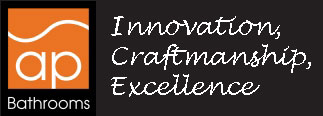Frequently Asked Questions
What is a P.C.?
“P.C.” is the term for a Prime Cost Item – bath, mirror, vanity, taps etc. On our quotations, you will find these items listed with a P.C. price allowed underneath in brackets. This is the cost of purchasing the item (excluding GST). It does not cover the labour or materials to fit the P.C.
Where do I start – do I phone a renovator first or find my P.C.’s first?
This is totally up to you. Some people have very firm ideas of what they want and others are looking for direction. When we compile the quote for you, if you have not stated the exact vanity that you want we make an allowance. When you do select your vanity the price is varied – either up or down depending on the cost of the selected vanity.
When I look at the quote, if I subtract the allowances and P.C. items from the total Quote Price is this your Profit and Labour cost?
There are a lot of different materials that are used in building a bathroom that are not specified in the quotation. Items such as cement, glue, water proofing products, grout, plumbing connections, nails, screws and Gyprock. We also need to cover replacement tools, workers compensation, administration – including insurances, travel, etc.
Why do you allow $35 +GST per m2 for tiles?
Tiles come in many shapes, forms and qualities. We have found over many years that tiles in this price range are generally square – don’t laugh you would be surprised how many are not – are of equal thickness, have the colour over the edges (not just on top) and not warped. When you select tiles you generally only view a sample. When the tiles are on the walls – no matter how good the tiler – poor quality tiles will show because you are now looking at a whole wall of tiles that do not sit flat or form nice square lines.
Do I have to have a Hob in the shower?
The Hob is the wall at the front of the shower. With improved water proofing methods it is not necessary to have a hob however if you prefer a hob we will construct and tile it.
Can I buy my own P.C. items?
Yes, you can purchase and organise delivery of your P.C. items. When purchasing toilet suites you will need to check if you need an “S” or “P” trap and the set out distance from the wall for the plumbing
Tile quantities, I have worked out how much I need and your figures are different?
When working out tile quantities we round up each figure to allow for cutting and allow approximately 5- 15% wastage. It is preferable that you have around ½ box left at the end of the job for emergencies. Tile quantities can vary also on the size of the tile and the layout of tiles.
How long will the job take?
Most jobs take between 4 - 5 weeks, but this does not mean your bathroom cannot be used for the whole time. A number of factors can impact the length of the job:
- Tiles – When ordering tiles we ask the supplier if they are in stock. If not, it may be some weeks before they are available – if we know in advance we can either put off the job start or the client may select other tiles.
- Vanities – the availability of the vanity, standard or custom made, whether the top is standard, granite, Caesarstone, corion or marble.
- Water proofing – during cold or humid weather the waterproofing can take longer to dry.
- Shower screens – fully framed laminated screens can take between 3-5 days to be made and installed. Semi frameless and frameless screens are generally 10 working days before they can be fitted. This is due to the strengthening process that the glass undergoes.
- Availability of fittings – occasionally fittings such as soap dishes and shower shelves are on back order from the supplier. They will contact us when ready for collection and we come and install the item
What does practical completion mean?
Practical completion means the bathroom is practically completed and is ready to be used. There may be some small items to be finished however the bathroom is ready for occupation.
Do you tile over tiles?
No, it may be more expensive, dusty and dirty to jack hammer up the floor tiles but the Waterproofing Standards say that the waterproofing must go on the substrate (underlying substance).
By not removing the floor tiles you are relying on the existing tiles not to move and provide waterproofing.
By removing the wall tiles and linings we can check the existing plumbing and re sheet walls so as to have a clean surface to water proof and adhere tiles to. Removing the tiles and wall linings also allows to check for structural damage caused by leaking water.
We guarantee our work for 7 years and therefore prefer to do it right the first time.
